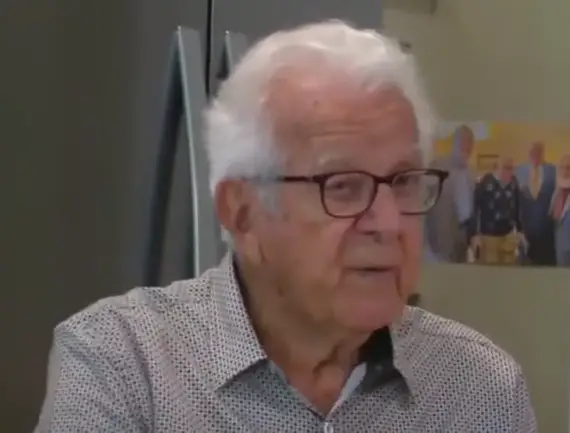WILLIAM POST

WHO WAS WILLIAM POST?
William Post was an American industrialist who received recognition for his contribution to the invention of morning cereals. He was born on October 26, 1854, in Springfield, Illinois, United States, and passed away on May 9, 1914, in Santa Barbara, California. Post spent his childhood in the state of Illinois. The first job he ever had was as a traveling salesman for an agricultural firm, and it led him to the West.
However, when William Post was 26 years old, he moved back to Illinois. He had a wide range of interests, which included the establishment of La Vita Inn, an institute for treatment via the use of mental suggestion in Battle Creek, Michigan, as well as investing in real estate opportunities in the state of Texas. In the year 1895, he established the food production company that has become his most well-known enterprise.
After conducting a number of trials, William Post created and launched his first product, which was a cereal beverage known as “Postum”. He established the Postum Cereal Co. Ltd. in Battle Creek, which would later become the General Foods Corporation. Almost immediately, further lucrative goods were produced, the most notable of which were Grape Nuts (1897) and Post Toasties (1904), which were initially known as Elijah’s Manna.
He switched his emphasis to battling unions, a cause in which he stayed involved until the end of his life. His broad and intelligent advertising efforts gained him instant success in the food sector, and he turned his attention to fighting unions. 1914 was the year that he underwent surgery to have his appendix removed, and while he was in the midst of recovering from the procedure, he took his own life.
William Post’s Early Years
Charles Rollin and Caroline Lathrop Post welcomed their son, Charles William “C.W.” Post, into the world on October 26, 1854, in Springfield, Illinois. He was the oldest of the three children. His mother was a poet whose work was published in publications, and his father, who participated in the California gold rush when he was forty-nine years old, worked a number of occupations before settling down as a grain and farm equipment trader.
Post, who liked to be referred to as “C.W.,” received his education in public schools and attended the Illinois Industrial College (the Illinois Industrial College would later become the University of Illinois) for a short period of time before dropping out at the age of. After working for his father’s company, Post relocated to Chicago and began working as a salesperson for a company that specialised in agricultural machinery.
After returning to his hometown in 1876, William Post took out a loan from his mother in the amount of $500 and started a general store in Independence, Kansas. A little over a year later, he sold his store and went back to Springfield for the second time. After tying the knot with Ella Merriweather, he went on to create the Springfield Plough Works in 1880. This enterprise was involved in the design and production of agricultural machinery.
Following a period of four years, both the company and William Post’s mental health experienced failure. His time spent recuperating in Texas was when he first became interested in real estate, more specifically in the area surrounding Fort Worth. Post was confined to a wheelchair by the year 1891 due to the severity of his illness. It was at a well-known sanitarium in Battle Creek, Michigan, that he sought assistance.
The facility was managed by Dr. John Harvey Kellogg. William Post was provided with a high-grain vegetarian diet that was formulated by Dr. Kellogg and comprised of natural food and beverage products while he was at the sanitarium. After spending only a few months in the sanitarium, Post was able to regain his health and remained in Battle Creek in order to establish the La Vita Inn, which was an institution that provided rehabilitation through the use of mental suggestion. The institute, on the other hand, was never able to attain any significant level of success. He released a book called I Am Well! that promoted the prevalent concept that the mind could treat physical maladies.
New Business Opportunity
In the year 1895, William Post experimented with a beverage that was comparable to the one that he was offered at Kellogg’s sanitarium in order to develop a cereal beverage coffee alternative. “Postum“ was the name he gave to his beverage. In the year that followed, he started producing “Grape Nuts”, a cereal that was modelled after another products manufactured by Kellogg. Post established his business in 1896 under the name Postum, Ltd., despite having only fifty thousand dollars in capital at the time.
The subsequent few years saw the introduction of a number of goods, one of which was a cornflakes product that he referred to as “Post Toasties”. Subsequently, he produced a number of other cereals, including Post’s Bran Flakes, Instant Postum, and Post’s Wheat Mix. When it came to his company, Post considered advertising to be the most important aspect. In the early 1900s, the company was able to attain statewide distribution by publishing advertisements in newspapers and publications that Post himself had designed and written.
A claim that Postum products would put customers on the “road to Wellville” by enhancing their red blood cells was one of the marketing methods that William Post employed in order to appeal to the health concerns of consumers. As a result of the success of his business, Post became a billionaire. The amount of capital that Postum Ltd. had reached was $5 million, five years after the company had been established.
William Post’s organisation, which had its beginnings in a barn, had grown to the point where it employed 2,500 people across factories that occupied twenty acres of his property near Battle Creek. This particular plant was the largest of its kind anywhere in the globe. Despite this, Post became dissatisfied with his business, so he retained the services of a group of experienced managers to monitor its operations. He then used his newly acquired fortune to focus his attention on other matters.
Other Business Ventures
In the year 1902, William Post came up with a form of postal currency that he called the “Post Check.” This sort of mail currency was comparable to conventional money orders. In the course of his efforts to garner support from Congress for the post-check, he encountered significant opposition. Senator Thomas C. Platt of New York, who was also the president of the United States Express Company, which was the company that marketed its own kind of postal cash, was the person who raised the most objections.
Small company owners were also dissatisfied with the Post Check because they were concerned that the new currency would encourage mail-order business. After coming to the realisation that these retailers carried his cereal items, Post eventually decided to abandon the Post Check project.
Soon after that, Post started purchasing what would eventually amount to more than 200,000 acres of land in the western region of Texas. Following his construction, he established a settlement known as Post City, which ultimately failed due to the dry conditions of the region. In order to counteract the drought, Post conducted a series of experiments in which he detonated massive quantities of dynamite in order to detonate rain from the sky.
During this entire period, William Post was a devoted leader of business owners in their fight against labour unions. He not only delivered speeches all across the nation but also published full-page denunciations against unions in a number of media outlets. In order to propagate his positions on labour, William Post founded a publication that was named “Square Deal”. In response, labour unions came together to organise boycotts against cereal goods manufactured by Post.
Post paid the highest wages in the business, provided bonuses, and protected his employees with welfare, accident, and health benefits in order to avoid the formation of unions within his own firm. Additionally, he had model homes constructed close to Battle Creek, which he then sold to employees on conditions that were acceptable to them. The anti-union organisation Citizen’s Industrial Alliance was founded with Post’s assistance, and he later served as the organization’s president. The National Trades and Workers Association took over as the successor to this organisation in the year 1910. The former president of the United States, Theodore Roosevelt (1858–1919), was offered $100,000 to serve as the president of the Post, but he declined the offer.
Death
At his residence in Santa Barbara, California, on May 9, 1914, William Post took his own life by means of suicide. His second wife, Leila D. Young, and his daughter, Marjorie Merriweather Post, who was the only inheritor of Postum Ltd., were the only people who survived him at his passing. It was believed that C.W. Post’s fortune was worth twenty million dollars at the time of his passing. A stockbroker named Edward F. Hutton, who was married to Marjorie Post for the second time was the one who led Postum in an aggressive battle to buy other supermarket companies. Through the year 1929, Postum Ltd. transformed into the General Foods Corporation.
RELATED: CLIVE CUSSLER – A Great Literary Pioneer of Adventure and Exploration
